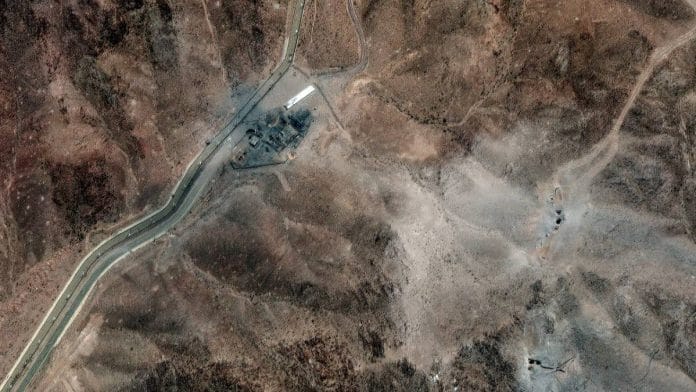New Delhi: US President Donald Trump Wednesday termed as “fake news” a CNN report stating that a preliminary and classified US Defense Intelligence Agency (DIA) assessment suggests US’ bombing Sunday of three Iranian nuclear facilities inflicted only temporary delays to Tehran’s nuclear ambitions—“a few months, tops”.
The CNN report, published late Tuesday, challenges the Trump administration’s assertion that Iran’s nuclear facilities were “totally obliterated”, revealing rather that the operation’s impact may be more limited than is being portrayed.
This is in contrast with Trump’s claims that “Iran can never rebuild its nuclear facilities”.
“Fake news CNN, together with the failing New York Times, have teamed up in an attempt to demean one of the most successful military strikes in history. The nuclear sites in Iran are completely destroyed! Both the times and CNN are getting slammed by the public!” Trump posted on his Truth Social Wednesday morning.
According to the CNN report, DIA findings, based on US Central Command’s initial battle damage evaluation, suggest the strikes hit mainly above-ground structures: power supplies, surface-level buildings and access routes. Iran’s underground centrifuges and uranium stockpiles showed limited damage or had been removed before the attacks.
The report quoted two intelligence sources as saying that centrifuges remained largely “intact”, and Iran’s nuclear stockpile was largely untouched. All the strikes appear to have delayed but not dismantled Iran’s nuclear capabilities.
Officials in the DIA emphasised that the evaluation is still evolving, with further intelligence still under review, including drone and satellite imagery.
The White House strongly refuted the report, branding it “flat‑out wrong” and blaming leaks on “a low‑level loser”, as press secretary Karoline Leavitt defended the bombings as “total obliteration” and a flawless mission in a statement to CNN. Defense Secretary Pete Hegseth also praised the precision and effectiveness of the strikes, The New York Times reported.
Senior military figures have also cautioned against overstating the outcome.
Chairman of the Joint Chiefs of Staff Gen. Dan Caine emphasised that it is “too early” to make definitive judgments, and weapon expert Jeffrey Lewis warned that numerous underground facilities in Iran—including at Natanz, Fordow, Isfahan, and possibly Parchin—remain intact and could facilitate a rapid recovery, the CNN report stated.
A planned classified congressional briefing on the operation for House members was postponed and rescheduled for Thursday for Senators and Friday for the House. Some have pinned the delay on the White House’s discomfort with the intelligence, asserting lawmakers are being kept in the dark because they “can’t back up” the rhetoric.
US B-2 stealth bombers dropped over a dozen 30,000-pound bunker-buster bombs on Fordow and Natanz, while submarine-launched Tomahawks missiles struck Isfahan early Sunday.
According to experts quoted in the CNN report, several strikes would have been necessary to fully collapse the underground complexes. The report confirms penetration of entryways but stops short of confirming structural collapse.
Iran reportedly pre-positioned some nuclear material to undisclosed locations, and the strikes left satellite images showing severe aboveground damage.
Officials said the strikes caused significant damage to the electrical infrastructure at Iran’s Fordow facility. It remains uncertain how long it will take Iran to restore power, regain access to the underground sections, and reinstall the equipment that had been relocated, NYT reported.
(Edited by Nida Fatima Siddiqui)
Also Read: Iran is learning the hard way that being a nuclear threshold state isn’t safe anymore






